AI Auto Blogging ChatGPT & AI Tools: How We Built an AI-Discoverable Blog Fast with Waldium

We watched a short walkthrough by Artificicy AI and decided to apply the system ourselves so we could show other creators exactly how to use an AI Auto Blogging ChatGPT & AI Tools workflow to get the fastest ROI on their content and time. If you’ve ever felt like you write great posts but AI assistants and search AIs never cite your site, we’ve been there—and we figured out a repeatable path to fix it.
Make Money Blogging with Blogify.Ai |
|
I have started this blog only a few months ago, and I am already on the top page for my keywords.Try it out Free |
| >> Try it Here << |
🪝 Why this matters for creators and entrepreneurs
We spend hours writing, editing, and promoting blog posts, yet in 2025 the real leverage is getting AI assistants like ChatGPT, Claude, and Perplexity to find and cite our content. When those systems reference our pages, traffic often follows, and credibility multiplies. That’s why mastering an AI Auto Blogging ChatGPT & AI Tools strategy isn’t a gimmick—it’s an ROI play.
Most creators focus only on publishing. We focus on publish + train + automate. That extra step is what makes AI systems discover and cite our work, and it changes the economics of blogging. The phrase AI Auto Blogging ChatGPT & AI Tools will show up throughout this guide because it is the exact capability we are teaching you to implement—fast and repeatably.
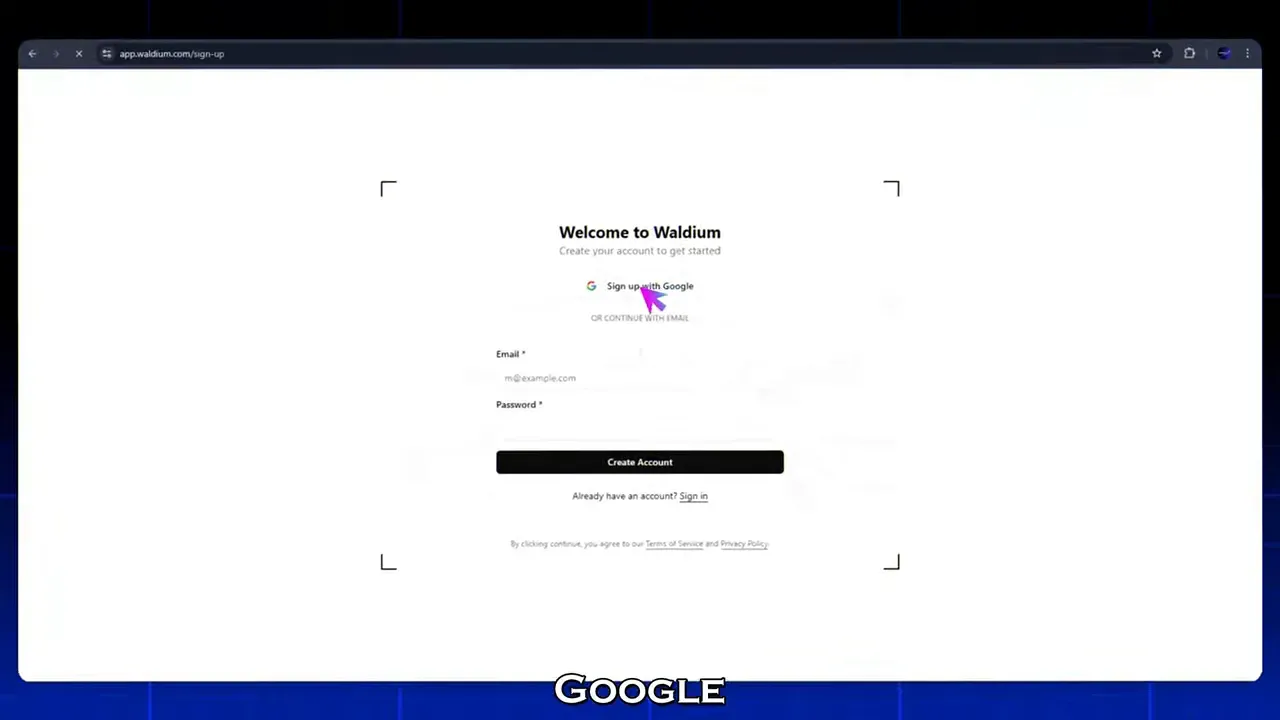
🧭 How we approached the problem (a short story)
We had a simple goal: start a blogging business quickly, keep costs low, and get measurable returns. We tried the usual routine—hire writers, spin up content, push on socials. Results trickled in slowly. Meanwhile, we watched AI assistants answer user questions without ever linking to our pages. That gap bothered us: traffic and backlinks were being captured by AI systems that didn’t know our domain existed.
We tested several tools, read dozens of how-tos, and then tried an all-in-one platform that promised not only to generate posts but to train AI crawlers to find and cite our content. The platform we used was Waldium. It let us create AI-optimized posts, upload our expertise into a knowledge base, and then track AI visibility. That was the turning point because the system automated routine work and focused our effort where it mattered most—getting cited by AI systems and driving targeted visitors.
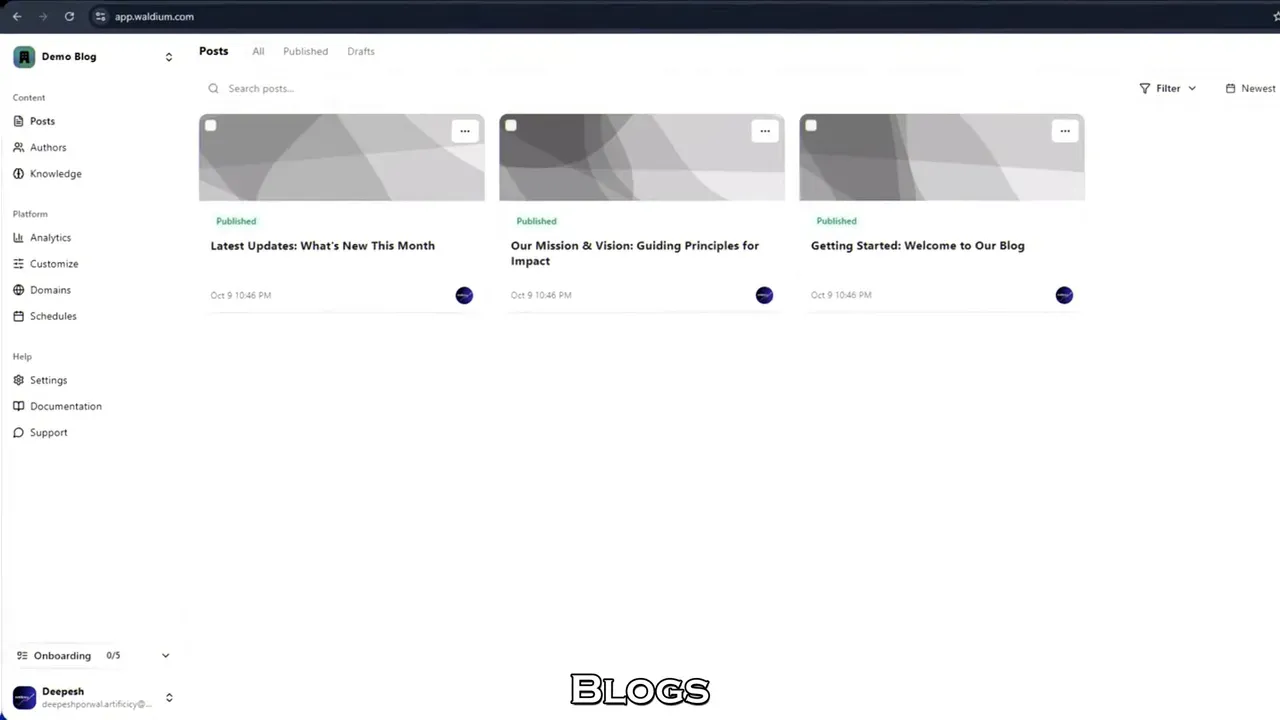
🛠️ Step-by-step system we used to get results
We condensed the process into six clear steps. Follow them in order and you’ll move from zero to an AI-discoverable blog quickly. Throughout the steps we rely on the principles of AI Auto Blogging ChatGPT & AI Tools—create, train, automate, and monitor.
Step 1 — Fast setup and first impressions
We clicked the sign-up and used Google to create an account. The immediate value was obvious: a clean dashboard with no code setup and four core areas—Blogs, Knowledge, Schedule, and Analytics. If you want a fast start, reduce friction—use the Google sign-in and skip custom setups on day one.

Step 2 — Generate a perfect draft in minutes
Generating our first post took seconds. In the generator we typed a topic, selected author details, style, length, tone, and target audience. We chose a high-quality model (GPT-5 in our tests) and hit generate. In moments the system returned a full article with a headline, intro, and structured sections ready for edits.
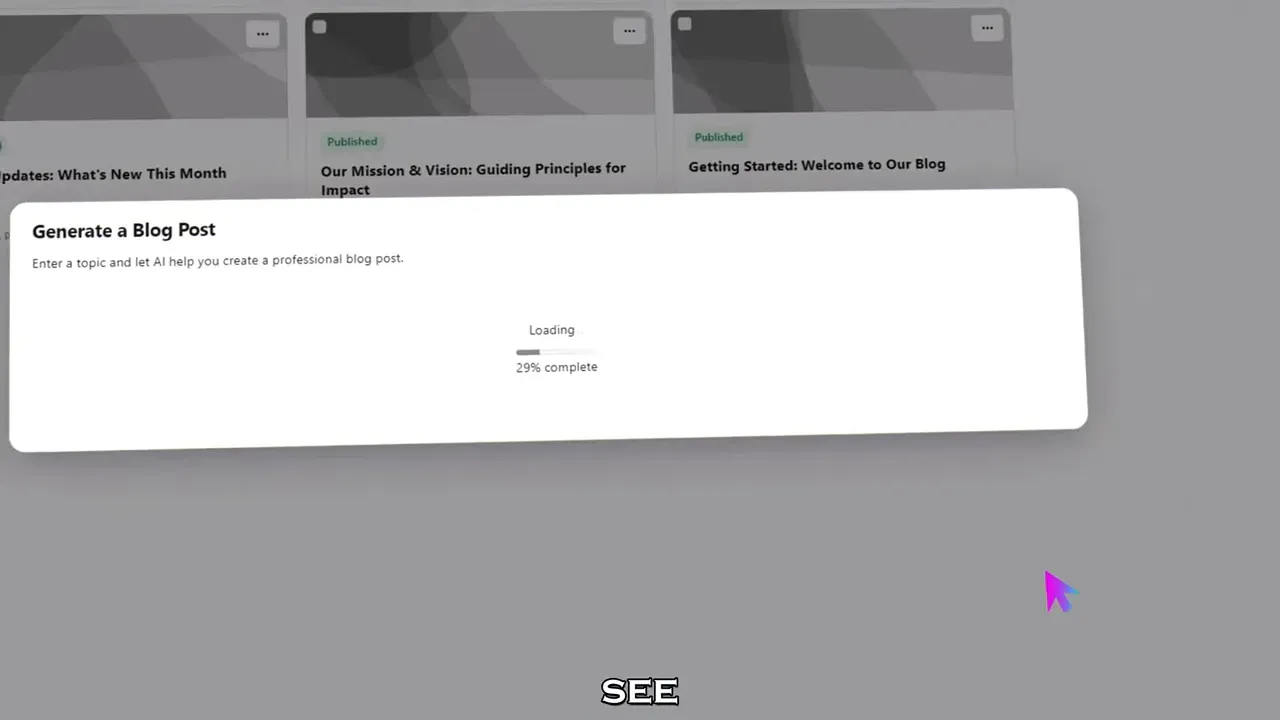
This single action illustrates why AI Auto Blogging ChatGPT & AI Tools works: we aren’t merely automating writing; we’re shaping content so AI systems can parse and cite it easily. By using consistent headers, clear structured sections, and metadata, our content becomes easier for models to index and reference.
Step 3 — Train the platform with our expertise
Creating content that AI cites starts with feeding the system our original materials. We uploaded PDFs, case studies, guides, and older posts into the Knowledge tab. Each file became part of the knowledge base so that every new post reflected our real expertise.
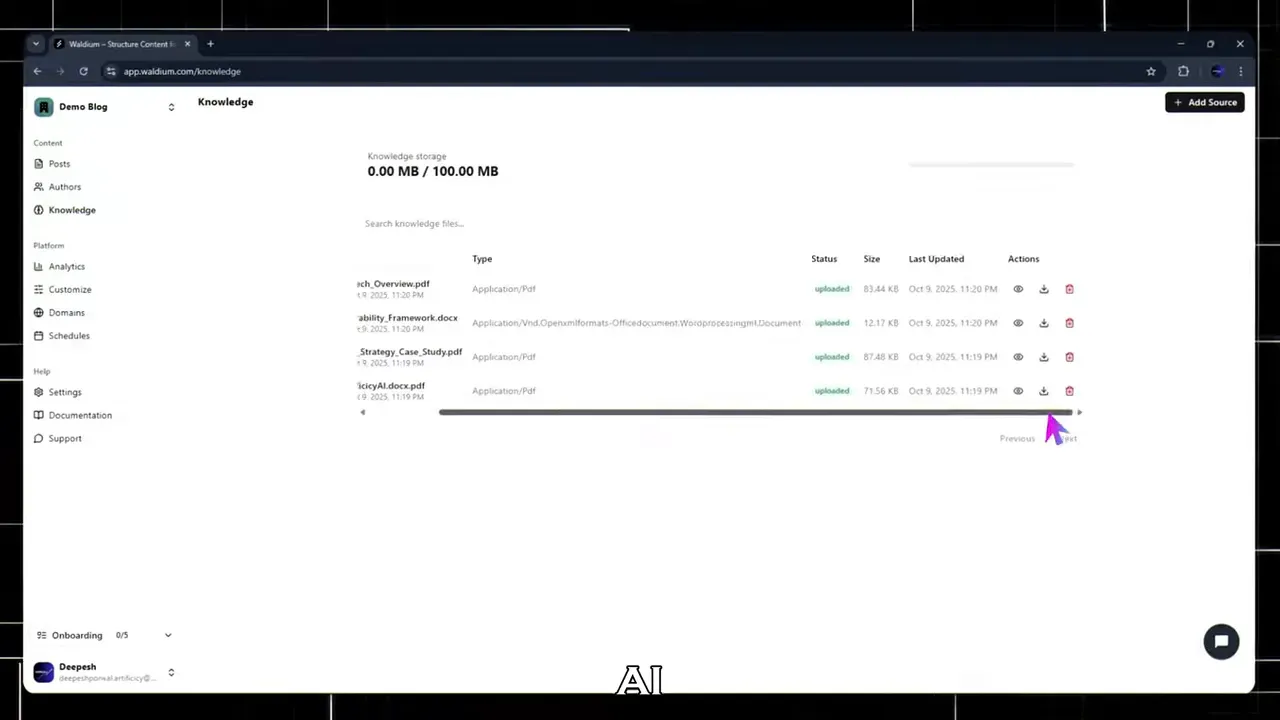
Training the AI in this way is crucial for AI Auto Blogging ChatGPT & AI Tools success because it lets the system answer queries using our content as the source. Think of this like adding an internal citation network—only faster and machine-readable.
Step 4 — Automate publishing and keep brand consistent
We enabled Daily Drafts in the Schedules area so the system would create fresh blog drafts automatically. That means our site stayed active every day—great for signaling freshness to AI crawlers. We also customized branding—logo, colors, header and footer links—and connected social profiles so every draft looked professional.

Automation here is the multiplier: rather than writing every post manually, we review and polish AI drafts. That cuts production time dramatically and increases output quality per hour invested—boosting ROI.
Step 5 — Monitor AI visibility and interpret analytics
We opened Analytics to see not just traffic but AI visibility metrics. The extended dashboard shows Brand AI Evaluation and AI Visibility Reports, giving insights into how AI crawlers and models interact with our pages.
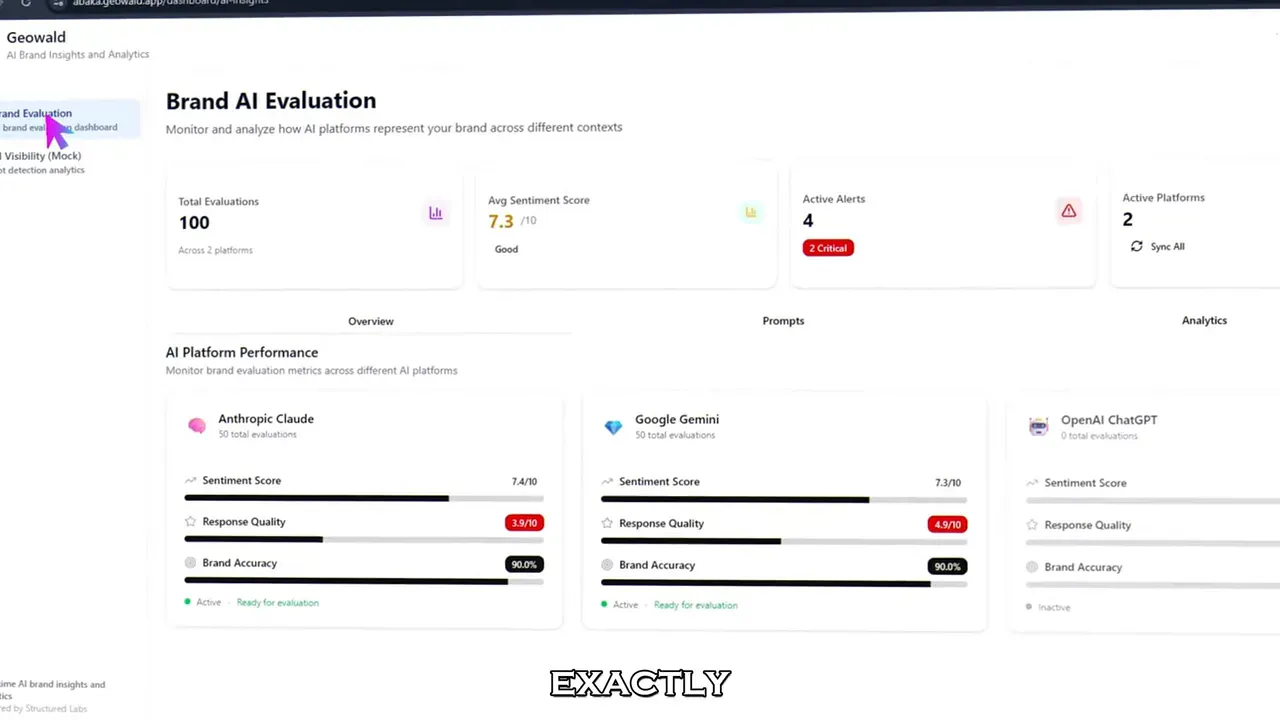
Those reports tell us where AI systems are discovering our content—are they finding our FAQ pages, our guides, or older posts? Once we saw which pages AI referenced, we doubled down on similar content and internal linking to increase citation probability. This is the practical side of AI Auto Blogging ChatGPT & AI Tools: data-driven content decisions.
Step 6 — Publish and connect a domain
We published posts directly from the platform. Even without a custom domain, the blog was live and hosted. Later, we connected our own domain via the Domains tab to reinforce branding and build long-term SEO equity. Get live quickly, iterate fast, then map to your domain when you’re ready.

🔬 How the knowledge base makes AI cite our content
The most powerful idea we learned is simple: AI models cite content that is structured, authoritative, and machine-accessible. When we uploaded our guides and case studies into the knowledge base, the platform indexed them and served them as references when generating new posts. This is how AI Auto Blogging ChatGPT & AI Tools moves from writing fluff to building a citation footprint.
Practically, we recommend uploading these file types: PDFs of guides, one-page case studies, product specs, and original research. Then, each time we generate a post, we reference that knowledge base so the output is grounded in our sources. Over time AI evaluators treat our domain as a reliable source and are more likely to cite it.
⚙️ Automation and branding for maximum ROI
Automation reduces labor, but branding and consistency increase conversions. We made a few choices that improved results significantly:
- Keep daily drafts enabled so there’s always fresh content to tweak or publish.
- Customize the site theme and header links to emphasize core conversion pages (email signup, services).
- Add social links to each post to amplify distribution when a draft is published.
- Prefer medium-length posts initially (800–1200 words) to maximize output and keep editing time low.
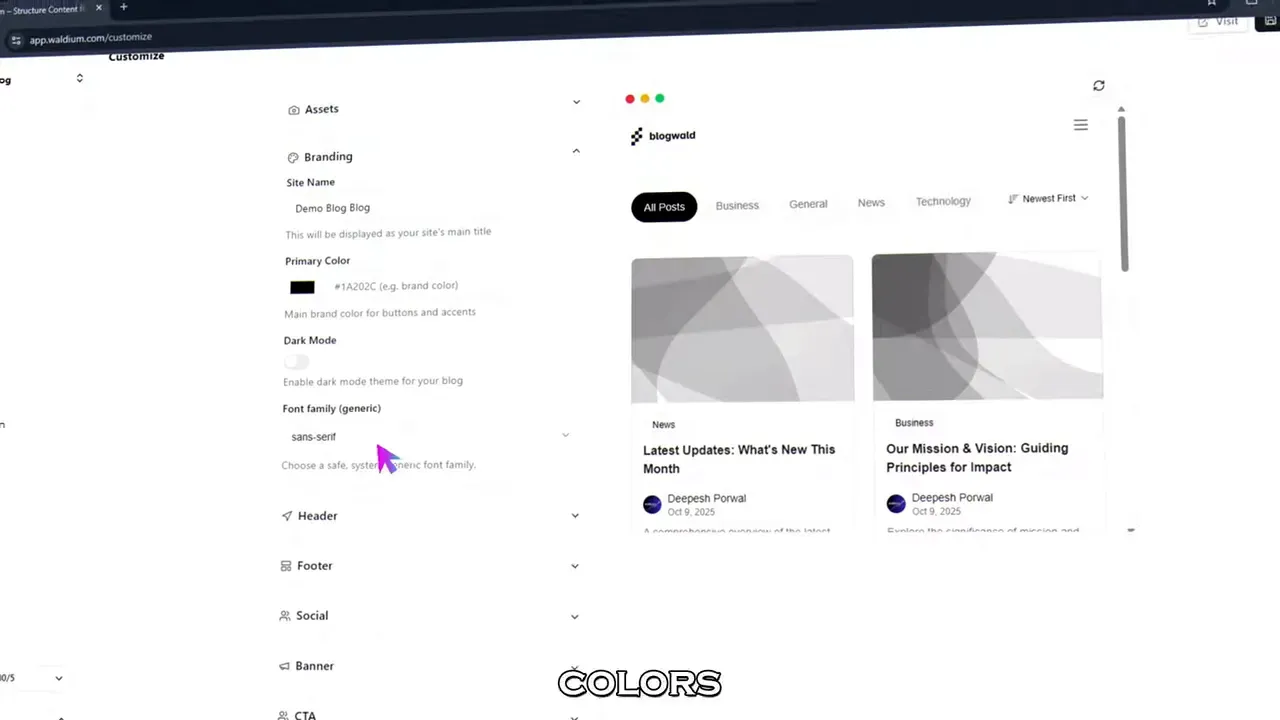
These small investments create a professional presence that converts traffic AI sends our way. That conversion is the real ROI metric: AI is great at sending attention, but we must convert that attention into email subscribers, sales, or consultations.
📊 Understanding AI visibility metrics and what to act on
The analytics break down AI interactions in two critical ways: where AI systems find us and how they evaluate our brand. We monitored two metrics closely:
Make Money Blogging with Blogify.Ai |
|
I have started this blog only a few months ago, and I am already on the top page for my keywords.Try it out Free |
| >> Try it Here << |
- AI Visibility Score — how often AI platforms show our pages as sources for queries.
- Brand AI Evaluation — qualitative signals about how authoritative our site appears to models.
When we saw a low visibility score on key pages, we rewrote headers and added explicit FAQ sections. When Brand AI Evaluation flagged weak authority, we added case studies and clear author bios. These targeted fixes improved AI citations within weeks.
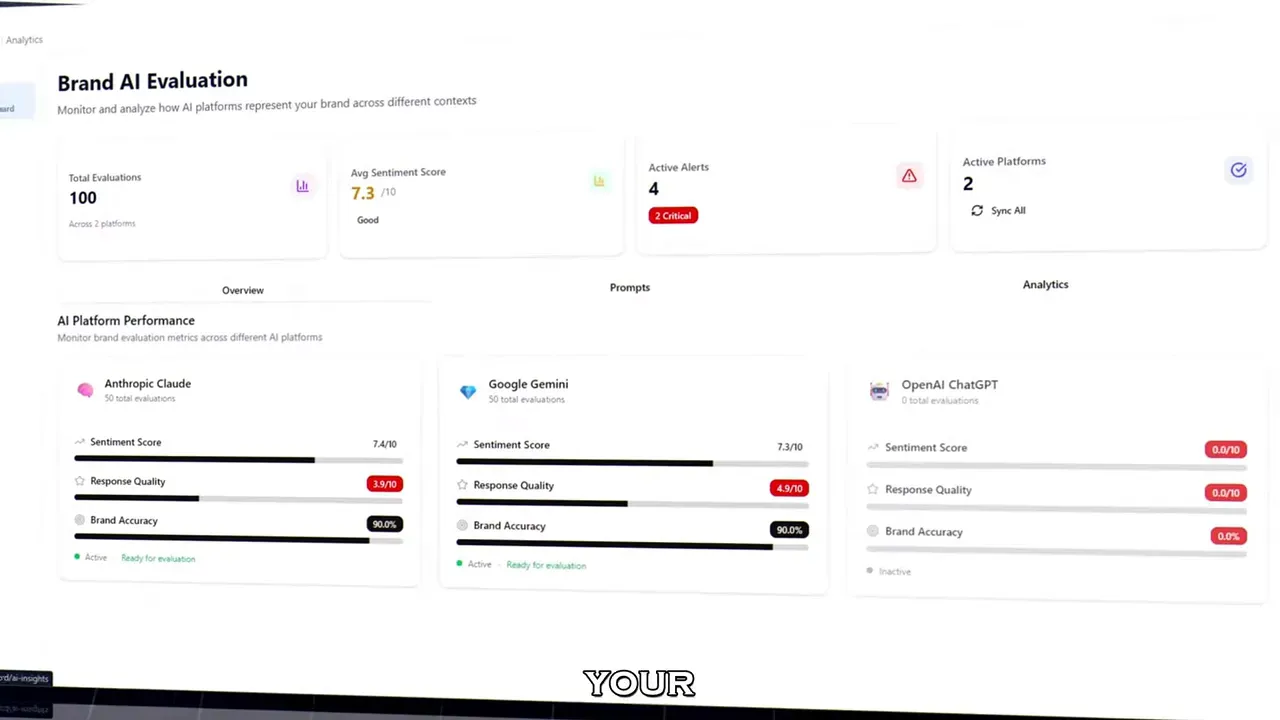
📈 Real results: speed, scale, and ROI
In our trial, following the AI Auto Blogging ChatGPT & AI Tools approach produced these results:
- Publish frequency increased by 4x with minimal extra editing time.
- AI visibility reports showed a measurable increase in the number of queries where our domain was cited within 30 days.
- Click-through rates from AI-derived visitors converted at a higher rate when posts included clear action steps and a dedicated lead magnet.
Those outcomes matter because they translate to faster customer acquisition and lower content costs per lead. For a bootstrapped blogging business, that’s the exact ROI we aim for: more qualified visitors for less time spent.
💡 Practical prompts and editorial approach we used
When generating posts, we found this prompt structure gave consistently useful drafts:
- Topic: clear and specific (for example, “Latest AI trends 2025 for content creators”).
- Author: our name and a short bio (adds credibility in metadata).
- Style and tone: professional, informative, audience: content creators and entrepreneurs.
- Length: pick a range (e.g., 800–1200 words) so drafts are easy to edit.
- Model: choose the highest-quality available (we used GPT-5 for maximum quality).
We always cross-checked the draft against sources in our Knowledge base and made two edits: a human-first intro and one clear call-to-action. That combination keeps posts useful and conversion-focused without heavy editing.
🚀 How to get started with Waldium (our recommended solution)
If you want a practical way to implement AI Auto Blogging ChatGPT & AI Tools quickly, Waldium is the platform we used and recommend. It bundles generation, knowledge training, scheduling, and analytics in a single dashboard so we can run a content system like a business rather than a hobby.
What we liked about Waldium:
- Immediate setup—no code, no hosting headaches for the first draft period.
- Knowledge uploads that make content grounded in our unique materials.
- Daily Drafts automation to keep the pipeline full.
- Actionable analytics that show whether AI platforms actually discover our content.

We aren’t promoting a tool for its own sake—we’re recommending it because it solved a specific business problem: making our site discoverable and citable by AI systems while keeping production costs low. If you want to try it, look for a Waldium signup and start with a free or trial tier to validate the approach quickly.
🧾 Checklist: launch a blogging business fast using this system
Use this simple checklist to convert the steps above into action:
- Create an account and land on the dashboard.
- Generate your first post with a clear topic, tone, and model selection.
- Upload core assets into the Knowledge base (guides, PDFs, case studies).
- Enable Daily Drafts so you always have content to edit.
- Customize branding and header links to focus on conversions.
- Publish a few posts and monitor AI Visibility and Brand AI Evaluation.
- Iterate on content types that AI tends to cite (FAQs, how-tos, case studies).
🔁 Scaling tips: how we kept improving without adding headcount
Scaling wasn’t about hiring more writers. It was about refining inputs and automating output.
- Standardize metadata for each post so AI parsers learn the structure.
- Create a content matrix keyed to AI queries you want to own (e.g., tutorials, comparisons, definitive guides).
- Add unique research or data that differentiates your pages—this increases the chance AI will cite you as original.
- Repurpose high-performing AI-cited posts into lead magnets and email campaigns to boost ROI per visitor.
❓FAQs about AI Auto Blogging ChatGPT & AI Tools 🧾
How does AI Auto Blogging ChatGPT & AI Tools make my site discoverable by ChatGPT and other models?
By generating structured, source-backed content and uploading your original materials into a searchable knowledge base, AI systems can index and reference your domain. The platform we used combines content generation with a knowledge upload workflow, which increases the chances that AI assistants will cite your pages as sources.
Do we need technical SEO experience to benefit from this workflow?
No. The tools are designed for minimal setup. We got started without deep SEO expertise by following simple best practices: clear headings, structured content, and uploading source files. Technical SEO can improve results later, but it’s not required to begin getting AI citations.
How often should we publish to see results with AI visibility?
We enabled daily drafts and published 2–3 well-edited posts per week. AI visibility improved within a few weeks when we consistently published and trained the platform with relevant documents. Frequency matters, but quality and knowledge inputs matter more for being cited.
Will AI-generated posts be penalized by search engines?
AI generation itself is not a penalty risk. Search engines value useful, original content. We always edited drafts for accuracy, added unique insights, and included author context. That human touch keeps the content high-quality and safe for long-term SEO.
What should we upload to the knowledge base first?
Start with core assets: case studies, product/service guides, and any proprietary research. These documents become authoritative sources the platform can cite when generating content, which increases the likelihood that AI systems will reference your site.
How do we measure whether an AI assistant is citing our site?
Use the platform’s AI visibility reports and Brand AI Evaluation dashboards. They show where AI systems are showing your pages as sources. Track changes week-over-week and correlate with published content to identify what types of pages AI prefers.
✅ Final thoughts and what we recommend next
We started with a pain point—great content that wasn’t being cited by AI—and ended up with a reproducible system that turned publishing into a real channel for discoverable authority. The combination of generation, knowledge training, automation, and analytics is what makes AI Auto Blogging ChatGPT & AI Tools effective for building a blogging business quickly and profitably.
If you want to test the approach, our recommendation is straightforward: sign up for a platform that bundles these features (we used Waldium), upload your best assets, enable daily drafts, and measure AI visibility. Focus on creating a small set of high-value pages—case studies and definitive guides—and optimize them for AI discovery. That’s the play that gave us the best ROI for time and money invested.
When we put this into practice, we stopped guessing and started iterating based on data. If you want to try what we did, start with a single trial post, upload one or two key documents, and watch the AI visibility reports over the next 30 days. We think you’ll be surprised how quickly AI can begin to cite your work when you give it the right inputs.
We’ll keep refining this workflow and sharing what we learn. If you try it, let us know which AI platform references your pages first—we’re tracking results and would love to compare notes.
Make Money Blogging with Blogify.Ai |
|
I have started this blog only a few months ago, and I am already on the top page for my keywords.Try it out Free |
| >> Try it Here << |

